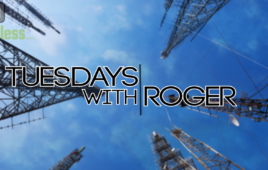AT&T is joining the pack of carriers – including T-Mobile and Verizon – moving toward unlicensed LTE technologies, but Mobility CEO John Donovan said the carrier’s long game is more concerned with user experience than speed.
AT&T Labs President and CTO Andre Fuetsch said Monday during a briefing at Mobile World Congress Licensed Assisted Access is on the carrier’s evolution roadmap to 5G, since he said carriers “can’t get to 1 Gbps without it.”
But while Fuetsche acknowledged the wireless game will initially be about who can reach peak theoretical speeds first, both he and Donovan said AT&T’s focus is on delivering a superior overall experience in the long term. AT&T, Donovan said, isn’t very worried about losing out on a first-mover advantage with, say, massive MIMO (LINK TO SPRINT ARTICLE) as it is delivering software and analytics to improve what’s happening in users’ hands.
“One takeaway is we’re not worried about anything other than speed,” Donovan said. “WE don’t spend a lot of time dwelling on architectural risk, we spend a lot of time thinking about how do we get the industry to speed up further, how do we get our suppliers to speed up. That’s the only thing you’ll find any anxiety over.”
“When you look at speed, you get to a certain threshold of speed when the customer can’t discern whether they’re getting 400, 500, 600 (Mbps),” Fuetsch added. “But once you get there though, then it’s about the experience. This is where spectrum and densification become less relevant … this is why software and analytics are so important.”
Fuetsch pointed instead to AT&T’s work on its Network 3.0 Indigo initiative and ONAP (the combination of OPEN-O and AT&T’s ECOMP), as the tools that will drive customer experience on the AT&T network by combining computational capabilities with network strength closer to the customer. The carrier’s proximity to the end point via the cloud will be an advantage for applications that require low latency, Fuetsch said.
That said, Donovan indicated AT&T is still sitting pretty in terms of spectrum reserves to deploy for more speed and capacity. The carrier, he said, still has 45 MHz of fallow of spectrum on WCS, AWS, and 5 MHz from its 2G shutdown – and AT&T has a game plan.
“I like where we sit asset-wise, but assets don’t really win wars. So we have to get the execution,” Donovan said. “We need to deploy faster and we need to take software-defined networking advanced. We need to do better spectrum management … We’re going to have to figure out how to get every megabyte in exactly the spectrum that it operates best for the customer experience at the lowest cost, and we need to pack those channels full.”
Filed Under: Telecommunications (spectrums)




